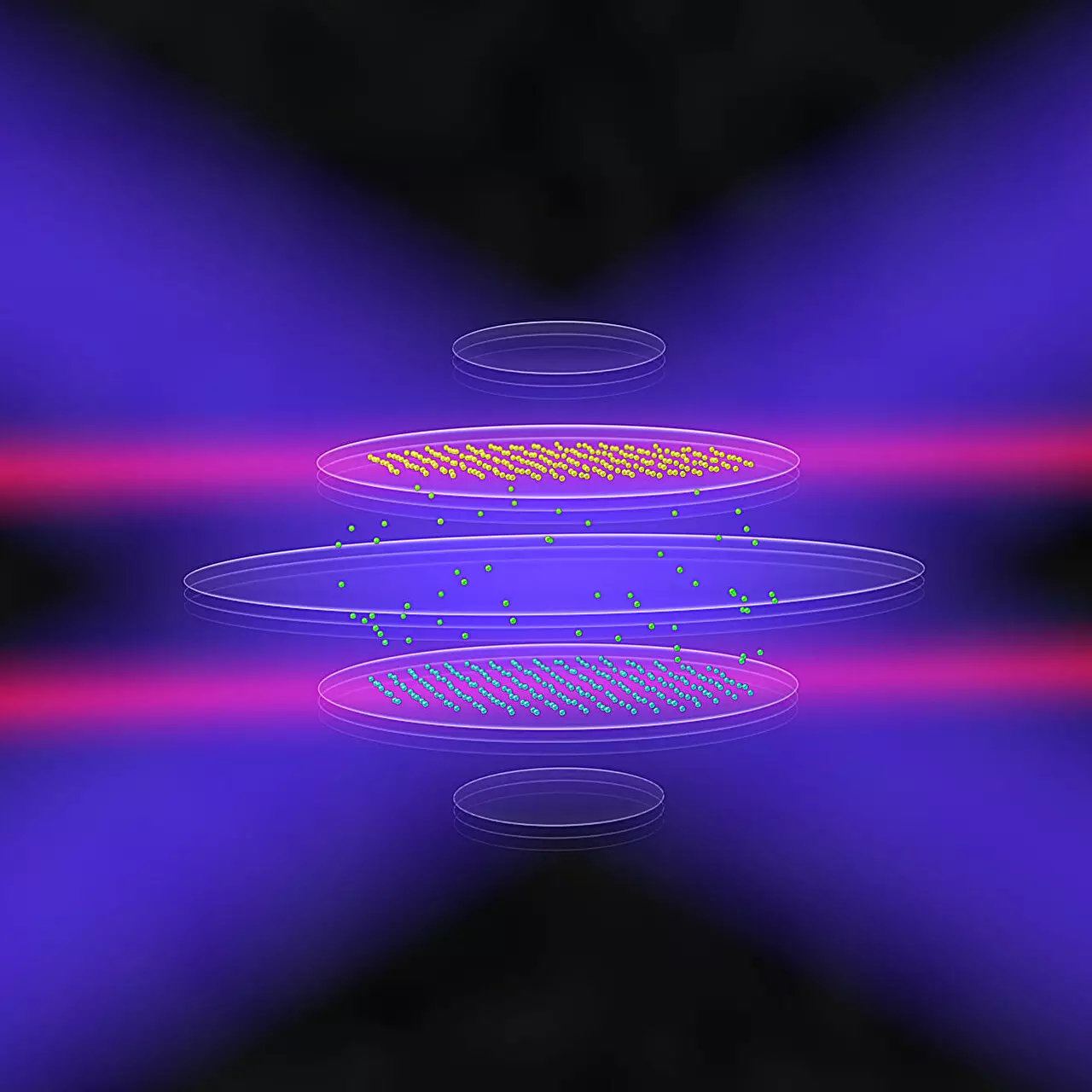Quantum technology stands at the forefront of new scientific advancements, harnessing the peculiar properties of quantum mechanics to perform computations and measurements that are fundamentally unattainable with classical systems. Among the leading contenders for quantum hardware platforms are trapped ions, or charged atoms held in place by electric and magnetic fields. Despite their promise, current innovations are stifled by significant limitations; predominant systems primarily operate in one-dimensional chains or two-dimensional arrays. This article explores a novel approach where researchers have proposed the realization of multilayer three-dimensional architectures to enhance the capabilities of quantum devices.
The ambition to construct three-dimensional ion arrangements is not merely an aesthetic pursuit; it represents a critical leap toward scalability and functionality in quantum technologies. Presently, the configuration of ions is predominantly limited, which restricts the ability to explore complex quantum phenomena. A breakthrough has emerged from a collaborative effort involving physicists from India, Austria, and the United States, including experts from JILA and NIST, who suggest that modifying the electric fields in which these ions are trapped could lead to stable and manipulatable multilayer structures. This proposition opens up uncharted territories in quantum information science, where capabilities such as teleportation and precision measurement could flourish.
The researchers’ focus on Penning traps—a sophisticated type of ion trap—presents a pioneering avenue for the investigation of more intricate arrangements. By manipulating the electric fields within these traps, the team successfully nudged ions into forming unique arrangements, such as bilayer crystals. This structure represents a significant advancement from previous configurations, which often included simpler, rounded formations. The nuances of electric field modifications led to the stabilization of these bi-layer systems, enabling the prospect of creating even more complex multilayered structures in the future.
At the core of this research lies the intricate balance between the repulsive forces acting on the ions due to Coulomb interactions and the confining potentials provided by the electric and magnetic fields. This balance is critical for maintaining stability within the traps while allowing the ions to self-assemble into tailored crystalline structures. Experimental designs that manipulate these forces grant researchers unprecedented control over ion positioning, essential for developing high-performing quantum systems capable of executing complex operations.
The implications of introducing a multilayer configuration are profound. Dr. Athreya Shankar, a key researcher involved in the study, points out that the bilayer geometry allows for extensive capabilities in quantum information processing, particularly in generating quantum entanglement across larger subsystems separated by distance. Such properties are intrinsic to the advancement of future quantum hardware that possesses enhanced robustness and efficiency.
Furthermore, the broader quantum mechanical behaviors expected from layered structures pave the way for new simulations and sensory technologies. The ability to manipulate the normal modes of the ions could facilitate the study of rich electronic behaviors under controlled conditions, enhancing the precision of measurements in various physical domains.
The collaboration among international researchers is integral to the development of quantum technologies, as ideas drawn from diverse backgrounds contribute to innovative strides in the field. Successfully transporting the concepts explored in this research into laboratory settings will lay the foundation for future designs of ion traps that capitalize on three-dimensional efficiencies. The findings outlined in the Physical Review X publication underscore the collective vision toward realizing fully-fledged quantum devices capable of superior performance.
As researchers embark on experimental validations of bilayer crystals within Penning traps, the scientific community is poised at the brink of a new quantum revolution. The transition to three-dimensional ion systems holds the potential not just for scaling quantum hardware but also for enriching the methodologies employed in quantum simulations and measurements. The synergy between collaborative scientific ventures could very well define the trajectory of advances in quantum technology, paving the way toward groundbreaking applications in computation and beyond. The road ahead is both challenging and exhilarating, filled with the promise of discovery as the field continues to evolve toward its extraordinary potential.

